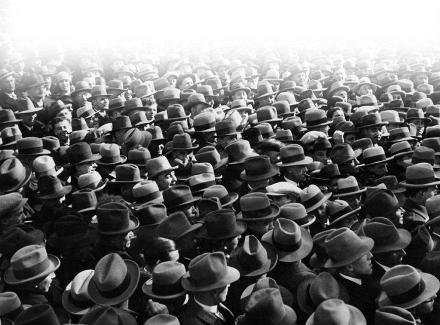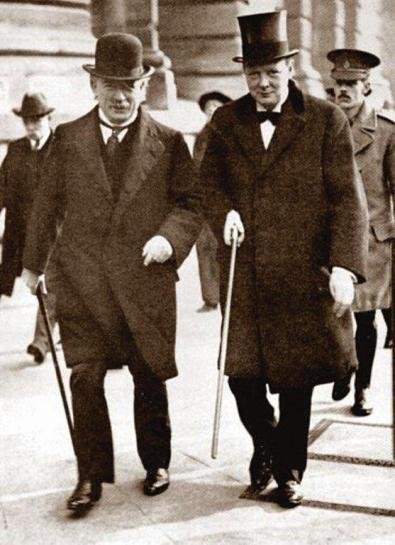In different epochs, the hat became a symbol of the dignity of the one wearing it; today, it still survives as a reminder of an ancient vision of courtesy
While not a surprising sight, the hat certainly awakens the dormant attention of people in today’s standardized settings. Their gazes linger, even in passing, at the sight of a hat as they are forced to take a position. Even if just for a moment, different social conceptions erupt in their minds and Ideologies flare up.
Quick as a flash — even if this interior movement takes place most often in silence — mentalities are shaken by the stimulus of that vision. Ideologies and social conceptions leap forward, not only toward a worldview, but even towards a political position. Is the hat on the right or on the left of the political spectrum?
We are talking about a man or woman wearing a hat in the busy streets of our megacities. The hat survives as a sign of social distinction. It offers a vision of ancient courtesy that revolved around human dignity. When it comes to wearing a hat, maybe I should not say man or woman, but rather gentleman and lady.
Is it reasonable to think that the hat — even when one’s attention is not fixed on it — awakens so many movements in the soul? I invite the reader to do this test: Discreetly ask your friends and acquaintances about their impressions when they see someone wearing a hat, crossing Fifth Avenue or taking an evening stroll on Central Park. Listen to their opinions and discretely take notes. They will reveal that these considerations are not far from reality.
* * *
The first objection against wearing a hat in this second decade of the twenty-first century is so commonplace that I even hesitate to fence against it. Crusade Magazine readers — already knowledgeable of our counter-revolutionary positions — would easily answer it. However, it is worthwhile to analyze where this trite argument comes from, as it is often worn as a mask to disguise an unavowed but fierce opposition.

The hat is more than just a protection for the head from the weather.
In the beginning of mankind, the hat — so this objection goes — was worn to protect the head from the weather, but with progress that need has disappeared. In the city or countryside, modernity has found so much more effective ways to protect the upper body that the hat has lost its usefulness. Therefore, to wear it today is a display of cultural backwardness or an attachment to an irrational fashion. This is the objection of the so-called practically-minded about the practical and functional use of the hat today.
These persons do not want to bear in mind that the head is the noblest part of the body. In it reside the faculties that lead to intellectual cognition, and therefore that most influence one’s spiritual formation. The Creator placed the head at the top of the body, whence throughout the ages it has communicated its dignity to the hat that protects it like a king transmits his dignity to his closest servants.
Different epochs and countries gave the hat shapes, sizes, colors and decorations indicative of the dignity of the one who wears it. Thus, the hat became a symbol. As it exists today, the hat is an impoverished symbol but a still worthy heir to its former glory. It is supported by many people of good taste who will not allow it to disappear. Yes, the hat is merely an external accessory. But, as Plinio Corrêa de Oliveira observed, it is an “external accessory that reveals to our senses, a mysterious hidden essence of a symbolic nature that exists in it.”
The hat is an external accessory that reveals to our senses a mysterious and hidden essence, symbolic of what exists in it.
How does searching for these symbols help a person? The most penetrating observers of Winston Churchill said that “he saw in things and situations, timeless symbols that embody eternal and brilliant principles.” The same principles that gave him strength in the tragic hours of the struggle against Hitlerism, keeping him in that struggle when his reward was only “blood, sweat and tears.”
* * *
Just as a priest wears a biretta to express his mysterious power as mediator between God and men, so also a hat worn with dignity evokes gestures and attitudes that constitute a true social liturgy, necessary for human acts in a Christian society. In both the biretta and hat, a Catholic “should look beyond the mere practical aspects and look for something which people who worship mundane practicality will call ‘useless’ — he must look for the principles that give the meaning of life and prepare the soul for Heaven” (Plinio Corrêa de Oliveira).



No comments:
Post a Comment